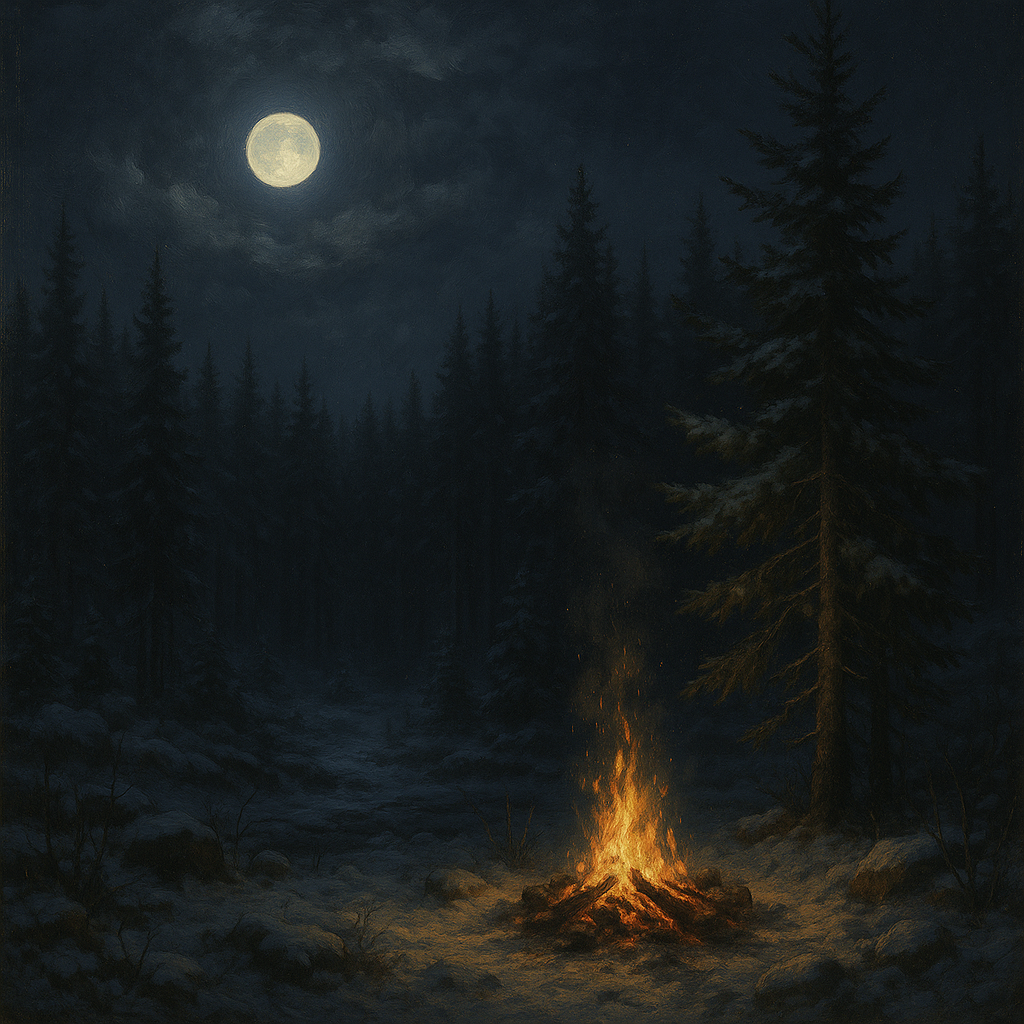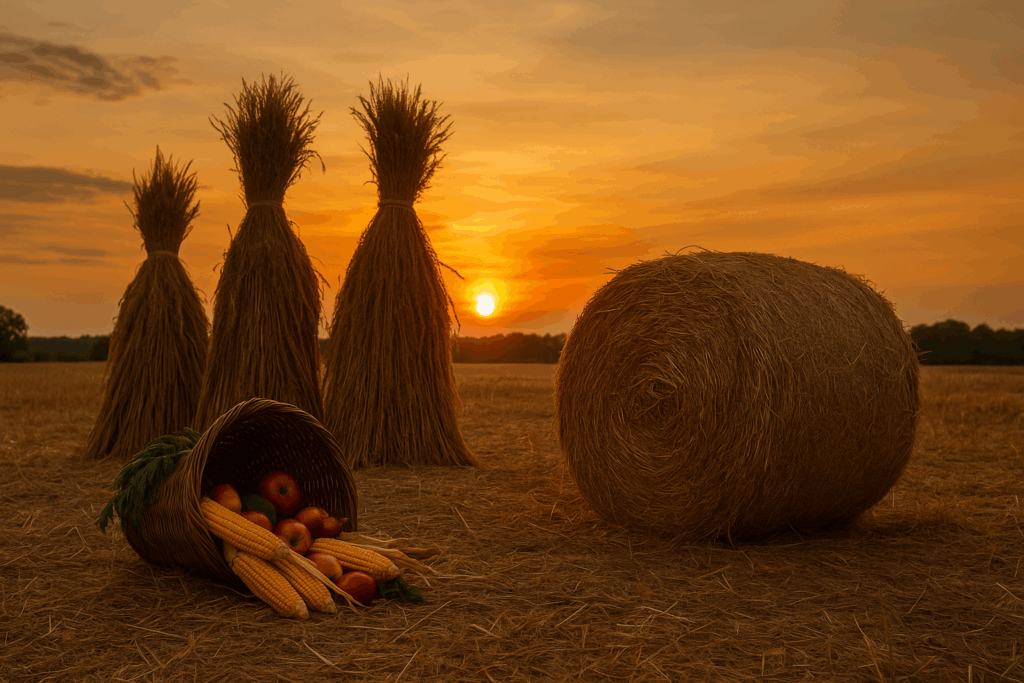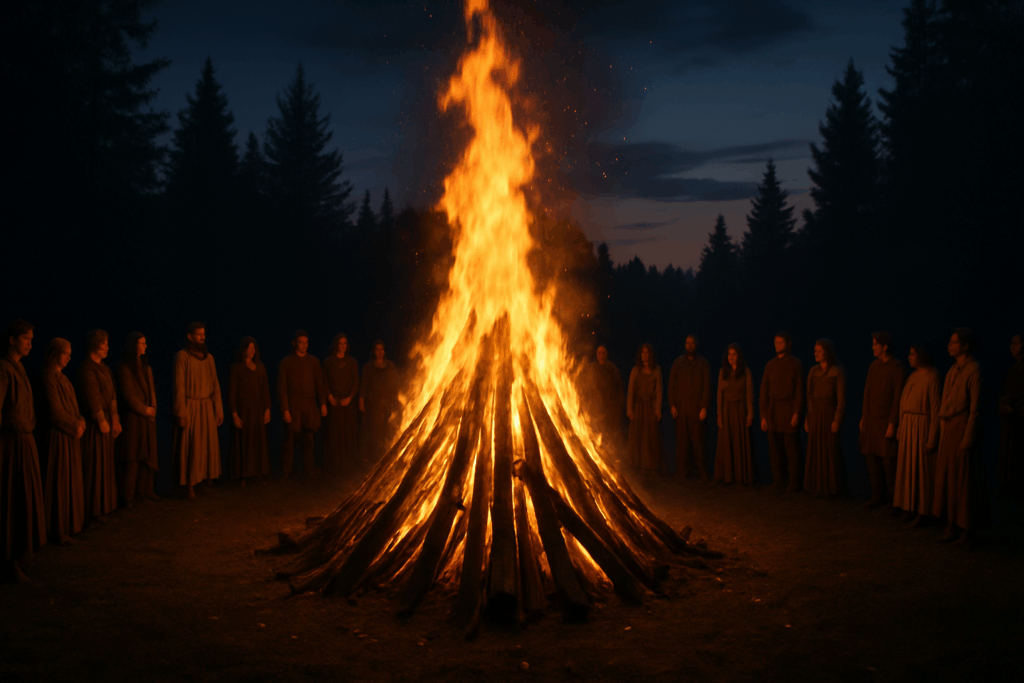🌑 November 3 – The Hollow Hearth

Rekindling warmth — magical tending of home fires after the veil thins.
After the flames of Samhain have burned low and the table of the ancestors has been cleared, there comes a tender quiet — the kind that fills the air between breaths, the hush that descends when both worlds, seen and unseen, draw close but no longer speak. This is the realm of the hearth: the hollow heart of the home, where ashes rest, coals dim, and the scent of woodsmoke lingers like memory. The hearth has always been the soul’s sanctuary, a place where the sacred and the domestic meet without boundary. On this day, November 3, The Hollow Hearth invites us to rekindle not only our fires but our sense of inner warmth, to tend the glowing embers of spirit that sustain us through the darkening months.
In the old world, every home was built around its hearth. It was the first stone laid, the sacred center around which the rest of life unfolded. It was both altar and gathering place, where families cooked, told stories, shared laughter, and weathered the turning of seasons. To let the hearth go cold was not merely inconvenient — it was a spiritual lapse, a sign that connection had waned between the living, the ancestors, and the elemental forces that guarded the home. Fire was presence; fire was protection. It was the ever-watchful eye of the divine within mortal walls. Thus, after Samhain’s great communal fires faded, each household would return to its own hearth to rekindle the flame, bringing a coal from the sacred bonfire as a symbol of continued life, continuity, and shared spirit.
The Hollow Hearth represents this return — the journey from communal ritual to intimate tending. It is the moment when the noise of celebration gives way to reflection, when we gather the scattered energies of autumn and draw them inward, like the breath before meditation. To tend the hearth is to acknowledge the sacredness of daily life, the quiet magic of care. In modern homes, the hearth may be literal — a fireplace, a stove — or symbolic, represented by the kitchen, the heart-space where warmth and nourishment are born. What matters is not the flame itself but the intention that kindles it. The act of lighting a candle, of sweeping the hearthstones, of stirring a pot of soup with mindful presence — these become rituals of renewal, calling back the spirit of the fire goddess who keeps watch over all domestic sanctuaries.
In Celtic tradition, that goddess is Brighid — she of the eternal flame, patron of poets, healers, and smiths. Though her festival, Imbolc, lies months ahead, her energy is felt in every hearth that still burns through the dark. Brighid’s fire is both inspiration and sustenance; it is the warmth that transforms hardship into creation. To honor her within the Hollow Hearth is to recognize that the fire within the home mirrors the fire within the soul. When we care for one, we nurture the other. In the quiet after Samhain, as the winds sharpen and the days grow shorter, the rekindling of the hearth becomes an act of faith — a declaration that even as the world outside sleeps, the inner light endures.
There is a sacred stillness in tending a fire, a kind of meditation born of simple action. As you strike the match or lay the wood, you become part of an ancient lineage of keepers of flame — those who understood that fire is not conquered but conversed with. Watch the way the flame curls and dances, how it consumes and transforms. Each spark is a reminder of spirit, each wisp of smoke a prayer rising. Fire does not simply warm the body; it purifies, it focuses, it awakens memory. In the Hollow Hearth, one might whisper intentions into the flame — prayers for peace within the home, for healing among family, for clarity in the cold months ahead. The fire becomes a silent companion, a witness to both grief and joy.
The hearth’s hollowness is its mystery. It is the space that holds absence, the void where the fire once roared. Just as the Earth rests after harvest, so too must the hearth sometimes lie in quiet shadow. The hollow, the empty, the waiting — these are not signs of lack, but of potential. The hearth teaches the art of tending without force, of patience in renewal. Sometimes, the soul’s fire dims not from neglect but from exhaustion. In those moments, the Hollow Hearth calls us to rest beside the quiet embers, to listen to the whisper of the ash, to trust that warmth will return in its own time. To honor the hollow is to honor the cycle — to understand that every blaze must cool, every heart must pause, every spirit must draw in before it can shine again.
For those who practice spiritual or magical traditions, this day is especially potent for home blessings and protection rites. As the veil recedes and the energies of Samhain settle, the home becomes a vessel for integration — a place to anchor the wisdom gained from the liminal nights. Simple acts hold great power now. Sweep the floors with saltwater or herbal infusions of rosemary and sage, imagining the old energies of the year departing with each motion. Open a window briefly to let the ancestors’ blessings pass through. Light a candle in the hearth or on the stove, naming it the flame of continuity. Whisper, “May this home be warm in spirit and heart. May its walls remember laughter. May its doors open only to peace.” These small gestures are not superstition — they are poetry made tangible, expressions of care that bind the visible and invisible worlds.
In psychological and spiritual terms, the hearth represents the Self — the center of wholeness within the human psyche. Just as a fire must be fed but not smothered, our inner flame requires balanced attention. Too little tending, and it dies; too much, and it consumes. The Hollow Hearth reminds us that balance is born from awareness. We must know when to feed the flame — through creativity, connection, and ritual — and when to simply sit in its glow. The art of tending is the art of listening to what the fire needs, which is, ultimately, the art of listening to what we need. When the outer world grows cold and uncertain, this inner hearth becomes our refuge, the sanctuary we carry wherever we go.
The sound of a crackling fire, the flicker of candlelight upon stone or wood, the scent of something simmering upon the stove — these are the simple sacraments of the season. They speak to a truth older than language: that warmth is holy. In a world of constant motion, the hearth invites stillness. It asks us to sit, to breathe, to be present with what is. The ancestors, whose spirits once gathered around such fires, understood this well. They did not light the hearth merely to survive the winter but to sustain their souls through the long dark. When we tend our own fires today, we join them in that same sacred act of endurance.
The Hollow Hearth, then, is not empty after all. It is full of unseen presence — the hum of memory, the pulse of flame, the echo of ancient songs carried in the smoke. To sit before it is to be reminded that home is not a place but a state of grace, a circle of warmth amid the cold. Each spark rising into the air is a promise that light endures, that love, once kindled, cannot be extinguished. As November deepens and frost begins to trace its silver upon the windows, the hearth becomes both altar and companion. It asks nothing extravagant of us — only that we notice, that we care, that we tend.
So rekindle your flame, literal or metaphorical. Sweep the ashes not as waste, but as sacred remains of transformation. Feed the fire with gratitude and gentleness. In doing so, you honor all who once sat before the flame and all who will come after. The Hollow Hearth is not merely the center of the home; it is the center of being — the place where warmth, memory, and spirit converge. Sit with it awhile, and you will feel the pulse of the season — slow, deep, and luminous beneath the quiet dark.



